Nova MENTOR 7 Light Paraglider – Ultralight. Ultracapable. Unstoppable.
The Nova MENTOR 7 Light Paraglider is more than a featherweight version of a performance icon—it’s the next-level XC wing for serious pilots who want uncompromising performance without excess weight. Because every gram matters in the sky and on the trail, the MENTOR 7 Light has been meticulously engineered to balance agility, control, and lightweight construction. So, whether you’re chasing thermals or hiking alpine routes, this glider delivers unmatched efficiency and feel.Nova MENTOR 7
Lightweight Without Limits
Right from launch, the difference is clear. With lighter materials, optimized internal construction, and a refined line layout, inflation is effortless—even in low wind. Therefore, even backcountry takeoffs become smoother and more controlled.
Furthermore, Nova’s state-of-the-art fabric choices ensure this glider is not only lightweight but also impressively durable. So, you get easy carrying and long-term reliability, all in one beautifully crafted wing.
Nova MENTOR 7 Light Designed for Long-Distance Pilots
The Nova MENTOR 7 Light Paraglider isn’t just light—it’s built for serious XC exploration. Combining two-liner performance with the stability of a three-liner platform, it’s made to go the distance. Thanks to an innovative hybrid line concept, you get lower drag, increased glide, and better bar efficiency.
As a result, your transitions between thermals become smoother, your climbs stronger, and your average speed faster. Meanwhile, pitch stability ensures the wing stays rock-solid—even when conditions start to shake things up.
Agile Handling with Precision Feedback
Handling is where the Nova MENTOR 7 Light Paraglider shines brightest. Brake pressure is well-balanced—light enough for long flights, yet direct enough to core tight thermals. So, you can work lift efficiently, make decisive turns, and center better—all without over-controlling or fatiguing.
Additionally, the wing gives clear, clean feedback. Because of that, pilots stay more connected to the air, improving both awareness and control. Whether on glide or in transition, you’ll always know what the air is doing—and how to react.
Safety That Supports Exploration
With great performance must come great safety—and that’s where Nova’s signature passive stability comes in. Even in strong turbulence or sudden collapses, the MENTOR 7 Light remains forgiving and composed. That’s thanks to its pitch-stable profile and smooth recovery behavior.
Because of this, you gain the freedom to fly longer, push further, and trust your wing in every stage of flight.
Perfect for Hike-and-Fly & Beyond
Although optimized for cross-country, the Nova MENTOR 7 Light Paraglider is an exceptional partner for hike-and-fly missions too. It packs down small, carries effortlessly, and performs at altitude—even in tight alpine conditions. From your favorite local hill to ambitious mountain routes, this wing goes wherever your adventure leads.
Elevate Your Potential
If you’re an experienced pilot who values performance, lightweight gear, and real safety, then the Nova MENTOR 7 Light Paraglider is your next evolution. Take off with confidence. Soar with style. Land with satisfaction.
Nova MENTOR 7 Light Technical data
| Size | XXS | XS | S | M | L |
|---|---|---|---|---|---|
| CTW¹ (kg) | 68-85 | 70-95 | 80-105 | 90-115 | 100-130 |
| RTW² (kg) | 70-80 | 80-90 | 90-100 | 100-110 | 100-125 |
| Flat area (m²) | 21.12 | 23.36 | 25.69 | 27.99 | 30.33 |
| Projected area (m²) | 17.9 | 19.8 | 21.77 | 23.72 | 25.7 |
| Flat aspect ratio | 5.5 | 5.5 | 5.5 | 5.5 | 5.5 |
| Projected aspect ratio | 4.18 | 4.18 | 4.18 | 4.18 | 4.18 |
| Weight (kg) | 3.65 | 3.9 | 4.15 | 4.4 | 4.65 |
| Number of cells | 66 | 66 | 66 | 66 | 66 |
| Flat span (m) | 10.78 | 11.34 | 11.89 | 12.41 | 12.92 |
| Projected span (m) | 8.65 | 9.1 | 9.54 | 9.96 | 10.37 |
| Line diameter (mm) | 0,4 / 0,5 / 0,7 / 0,8 / 0,9 / 0,95 / 1,2 | ||||
| Line length (m) | 6.47 | 6.81 | 7.14 | 7.45 | 7.76 |
| Max. chord (m) | 2.47 | 6.81 | 7.14 | 7.45 | 7.76 |
| Certification (EN/LTF) | B | B | B | B | B |
¹ CTW: Certified take-off weight in kilograms.
² RTW: Recommended take-off weight in kilograms.
Nova MENTOR 7 Light Colours
Standard colours: Red, Gold, Lime, Blue.
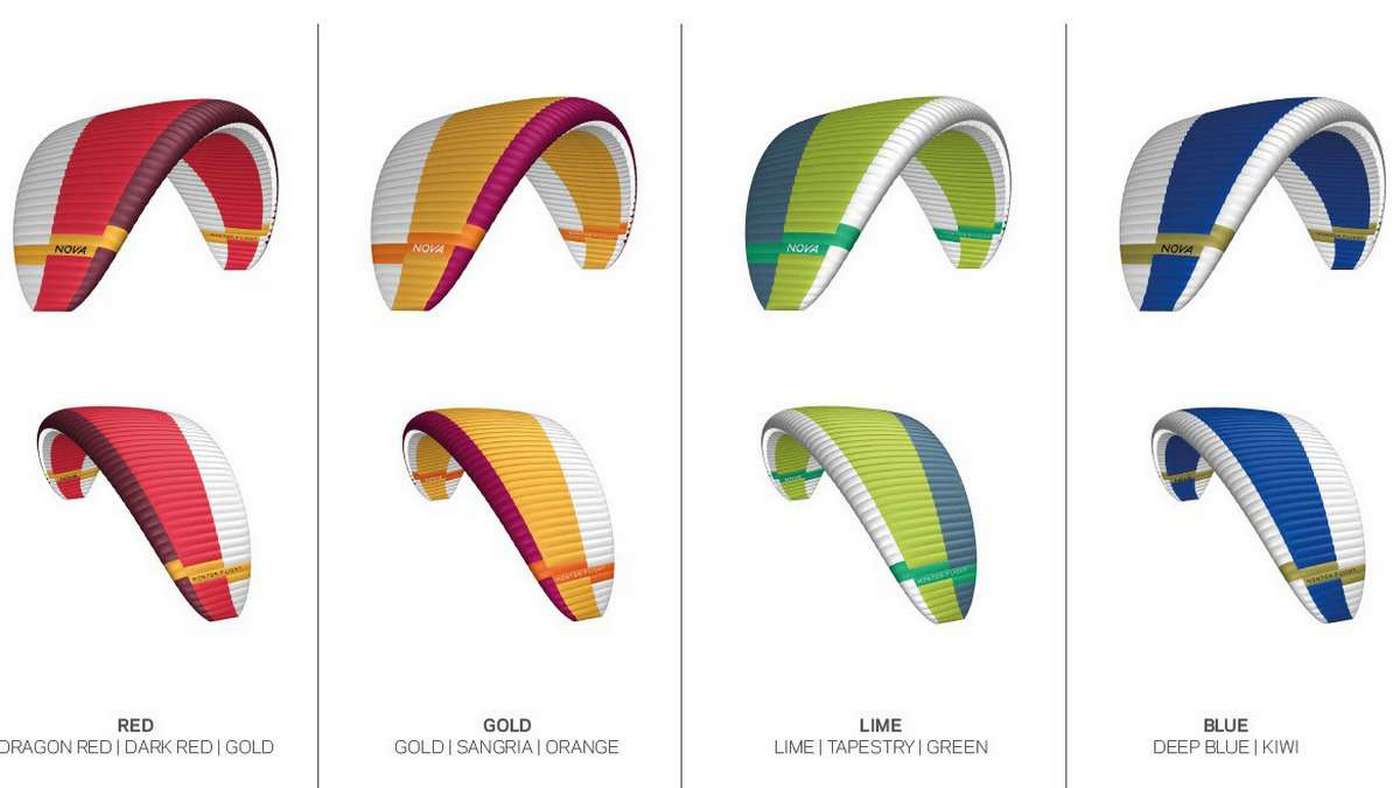
Custom colours: Choose your colours and email us the colour reference with your order. Include a screenshot if you can. Full payment required upfront to confirm your order after which it cannot be cancelled.
Package
-
-
- Concertina Bag Light OR Rucksack
- Inflatable pack roll
- Manual
- Windsock
- Repair kit
- Speed system cords
-
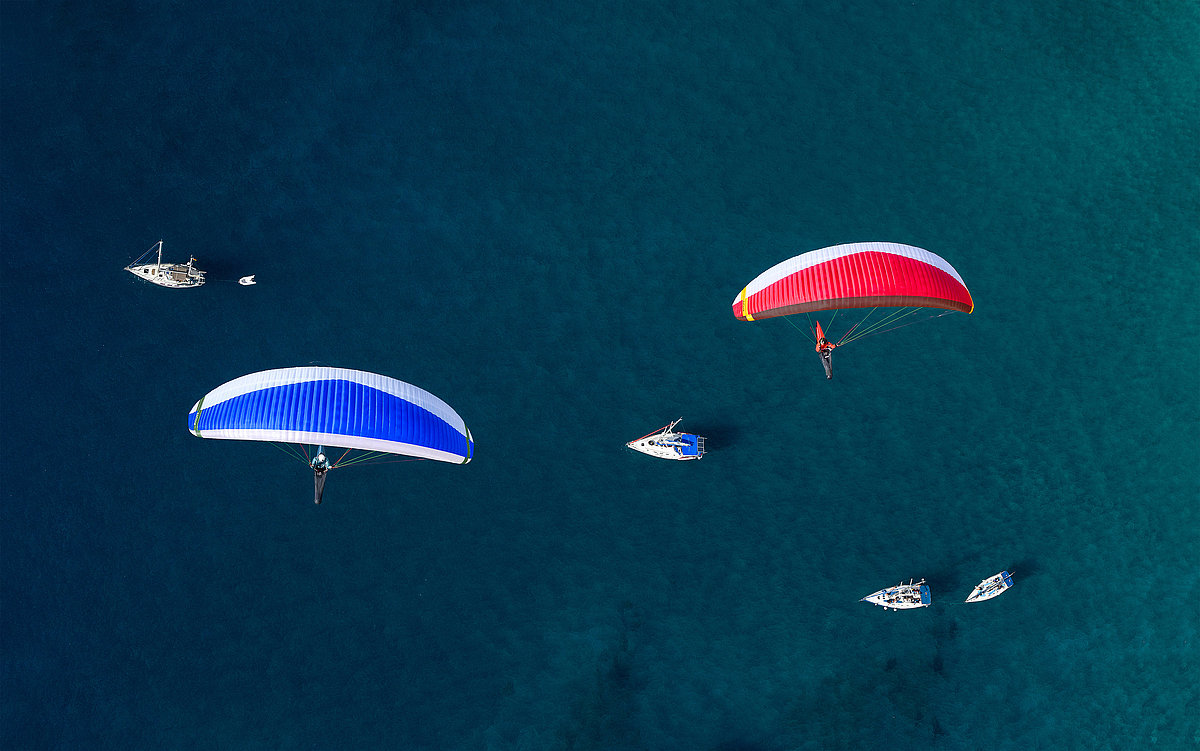
MENTOR 7 Light – Hybrid 2.5-liner
The best possible combination. This performance optimised 2.5-liner flies more comfortably than many 3-liners. How come? Philipp Medicus, Head of R&D at NOVA explains: “The difference in design between the MENTOR 6 and 7 is greater than between the 2 and the 6. Absolutely everything is new. Only the pilot group and its potential as an XC machine are the same.” This means the MENTOR 7 Light will appeal to all cross-country pilots who would like to achieve their distances within the B class and who want a state-of-the-art “teacher” at their side.
Intelligent lightweight construction.
Among other things, the MENTOR 7 Light owes its outstanding performance to the 66 cells and its complex inner construction. In order to live up to the name “Light”, the wing features high-quality, durable lightweight materials. Ideal for ambitious cross-country flights and every conceivable hike & fly adventure.
Optimised XC potential.
The strength of the MENTOR 7 Light lies in its “actually usable performance”. Fully accelerated, it cuts solidly through unstable air masses, and the C-steering can be used to efficiently mitigate turbulence. Performance, smooth flying and safety are the hallmarks of a genuine MENTOR. The MENTOR 7 Light also impresses with its manageable extreme flight behaviour. For example, accelerated collapses are even more gentle than on the previous model. All NOVA test pilots confirm that this wing, with its moderate aspect ratio of 5.5, is very pleasant to fly and additionally has even more top speed than the MENTOR 6. The ideal prerequisites for breaking personal records.
Perfect pitch (control).
The MENTOR 7 Light has Height Adjustable C-Handles (known as HAC handles) on the risers, that allow pitch control in accelerated flight, which was previously limited to two-liners such as the XENON. This means it is easy to compensate for turbulence and flying XC is far more efficient. Those with no previous experience of C-steering can take a relaxed approach to learn this new flight technology with the MENTOR 7 Light and gain a real performance advantage for themselves. Please note: how this C-steering works is explained below.
Elaborate design.
Like Nova’s XENON, its “little brother”, the MENTOR 7 Light does not work without rods. Therefore, Nova says goodbye to their “Easy Packing” principle in favour of a clear performance advantage. This basically just means that they recommend you don’t stuff the MENTOR 7 Light into the pack sack crumpled up, but rather folded up and packed with the help of the enclosed pack roll. A little effort is worth it, as this means the rods remain in shape, the lines are tidier and it saves time during the preparation before the next flight. Please note: when buying the MENTOR 7 Light, you can decide between the Concertina Bag Light or a rucksack.
Multi-talented risers.
The most prominent feature of the MENTOR 7 Light’s new Speedbrake Riser 2.0 is the HAC-Handles. Another striking feature is the “Baby-B” line, which acts as a moveable pulley on the B3 line. This means the riser is a little more complex, but it is still clearly laid out and easy to handle even when launching. Good to know when ground handling: you can kill the MENTOR 7 Light very effectively using the C-lines. As there is no C3 line, what does not work so well are asymmetric corrections via the C-lines. For lateral directional corrections, Nova therefore recommends using the brake.
Pilot target group
The MENTOR 7 Light (EN/LTF B) is a state-of-the-art “teacher” in the tradition of the MENTOR series (performance, smooth in flight, safety), which does not tend to overshoot during inflation and impresses with an extreme flight behaviour that is manageable for its class. As a hybrid 2.5-liner, it is suitable for cross-country pilots who are experienced in handling EN B gliders, or who want to get the maximum out of a flight using the speed-bar and HAC handles. So if you want to familiarise yourself with pitch control similar to the flying feeling of a two-liner, this is the wing to fly. It is important to understand that the hybrid construction partly influences ground handling and means, for example, that the use of the B3 stall is more effective than classic big ears.
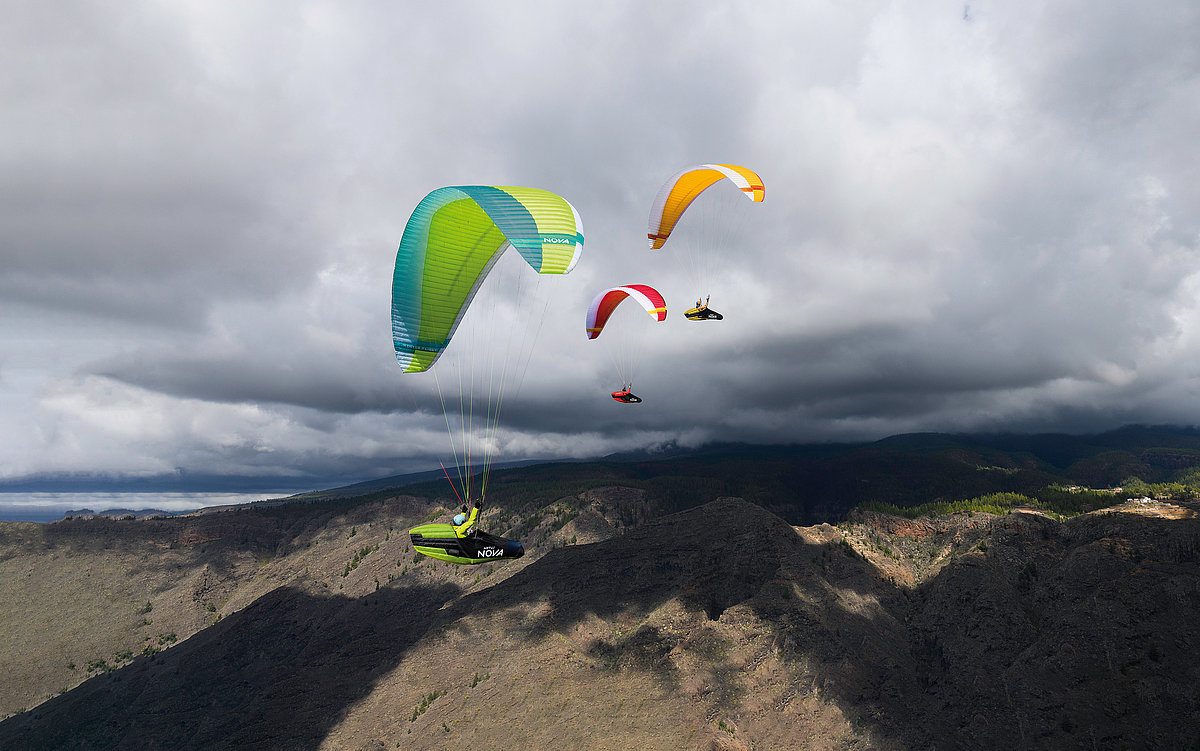
Features
Hybrid design as a 2.5-liner. On the outer wing the MENTOR 7 Light is a two-liner, in the center a three-liner. This means this “2.5-liner” does not have a C3 line. The smart redistribution of the attachment points and a profile optimised for accelerated flying make the MENTOR 7 Light a comfortable and potentially record-breaking fast cross-country glider. At the same time, the safety and smoothness in flight remains typical of the MENTOR and accordingly the certification also resulted in EN B certification.
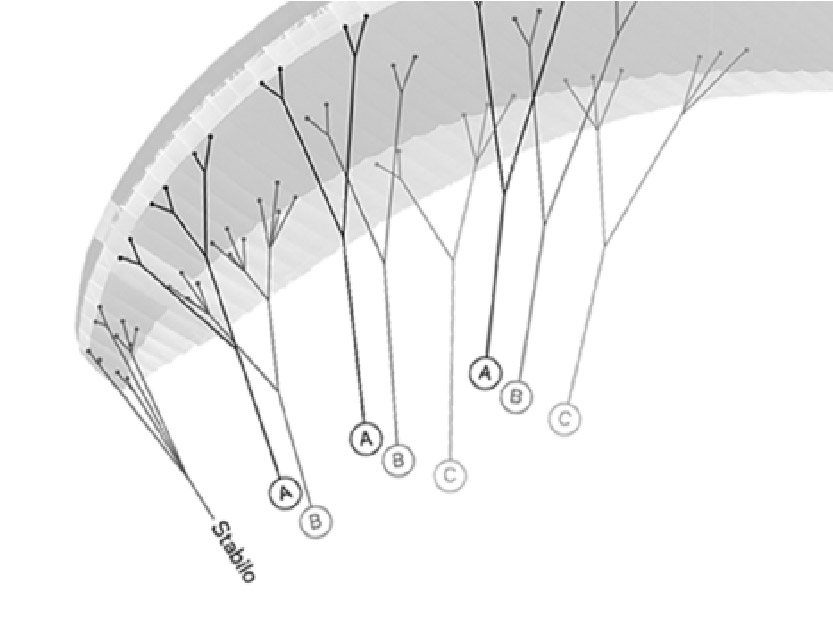
Speedbrake Riser 2.0 incl. HAC Handles.
The MENTOR 7 Light has HAC handles (Height Adjustable C-Handles) on the newly revised riser. With these, pitch movements in accelerated flight can be compensated for in the best possible way. This means that on cross-country flights you to get from A to B even more efficiently – i.e. faster and with less sink. In addition, the C-steering is very comfortable and requires little effort.

Aerodynamics optimised for speed.
The design of the MENTOR 7 Light focused on speed. The profile ensures a high degree of pitch stability even at low angles of attack. In numerous simulations, the ballooning as well as the stress distribution was refined to minimise the deformation of the glider when accelerated. The cell openings are designed so that the internal pressure remains ideal even in accelerated flight. The result is excellent glide performance with an exceptional level of stability.
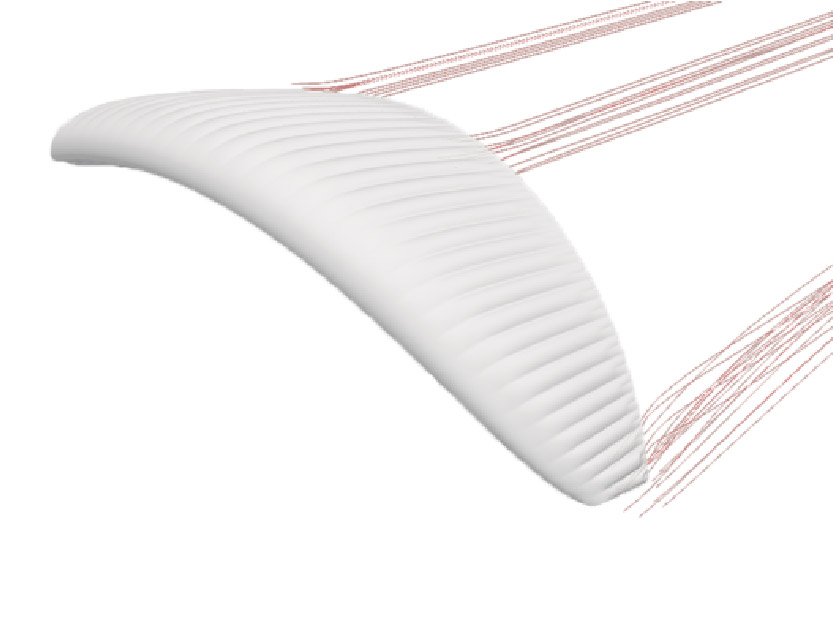
Nova MENTOR 7 Light Technology
Two concepts combined. A 2-liner at the wing tips, a 3-liner in the centre. This means this “2.5-liner” does not have a C3-line. Reduced line metres means less drag. Thanks to the two line areas at the wing tip, during acceleration an aerodynamically favourable wing twist is possible. This increases the performance in accelerated flight. The design also enables particularly efficient C-steering.
Flat profile nose.
Anyone who tries to fold a piece of paper around a ball will notice that there are always creases. The nose profile of a paraglider is the same – the sail cloth has to adjust to both the profile and ballooning effect (cells are round, not straight). Double 3D Shaping uses additional seams to reduce creasing and therefore increases the performance of the wing.
Under pressure. NOVA Air Scoop is an optimised air intake, which increases the internal wing pressure. NOVA’s Air Scoop principle is similar to the ram-air inlet duct on a sports car: increased airflow produces higher pressure. Higher internal pressure in a paraglider means improved performance through increased structural stability and collapse resistance.
More compact
The aspect ratio of a glider is not the only factor in passive safety, but still a very important one. A high aspect ratio favours cravats after asymmetric collapses, generally shorten brake travel and normally makes wings more difficult to fly. Nova’s analytical tools permit them to build performance wings even with a low or moderate aspect ratio.
Light and durable.
Paragliders in the Weight-optimised category are lighter than conventional paragliders – but offer the same mechanical stability and durability. These wings are lighter to carry, easier to launch and are therefore suitable for hike & fly. Weight-optimised is aimed at pilots who appreciate light weight without compromising on durability.
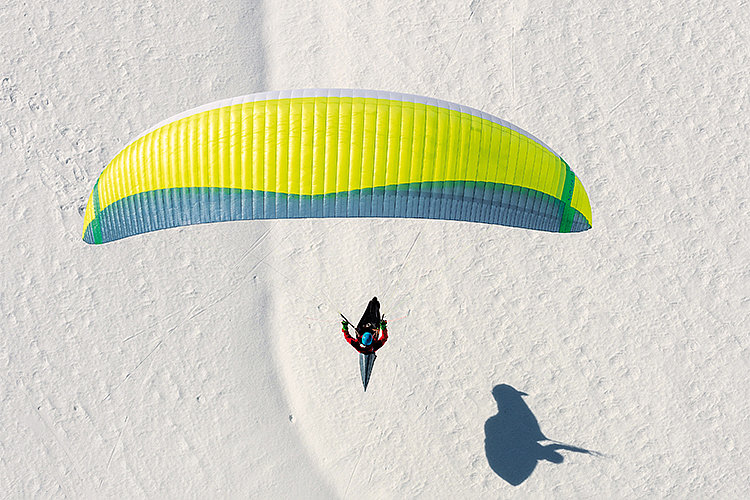
Nova MENTOR 7 Light Materials
| Leading edge: | Skytex 38 Universal, 38 g/m² |
|---|---|
| Top surface: | Skytex 27 C2, 29 g/m² |
| Lower surface: | Skytex 27 C2, 29 g/m² |
| Profile ribs (suspended): | Porcher Skytex 27 Hard, 27 g/m² |
| Profile ribs (unsuspended): | Porcher Skytex 27 Hard, 27 g/m² |
Nova MENTOR 7 Light Lines
| Main lines: | Liros PPSL191 / U-8001-130 |
|---|---|
| Gallery lines: | Edelrid U-8000 / DC40 |
| Brake lines: | 7850-240 / U-8000 / DC40 |
| Risers: | Kevlar 12 mm |
Nova MENTOR 7 Light Other reviews
“The Mentor 7 Light earned our trust over many flights in difficult conditions. Being so easy to fly, it saves the pilot a lot of energy, making long XC flights less exhausting and thus safer. The technology sounds impressive and during a first demo flight you might be intimidated. But it is really a benign high-B glider, especially for the performance it provides on full bar. A big plus is the handling: it has all the advantages of easier handling of a lighter wing, but none of the disadvantages such as a delicate build or jumpy behaviour. Nova have announced a full-fat version will arrive later. .”
— Cross Country Magazine, issue 233 (pdf)
How does the C-steering work?
The so-called HAC handles (Height Adjustable C-Handles) are mounted on the C-risers. These permit a more efficient pitch control, usually only possible on two-liners. The effort required to apply them is so minimal, that even after a long flight they never cause fatigue. In accelerated flight, the HAC handles can be used to increase the angle of attack more quickly and sensitively than would be possible by releasing the speed bar. Additionally, asymmetrical corrections are possible, e.g. for a change of direction. In the end, the C-steering means it is possible to fly faster, more efficiently and in a more relaxed manner. At trim speed, if the HAC handles are pulled down about 20 cm, a stall occurs, but the pilot will know this in advance through pulsating feedback on the handles.
Do I have to use the C-steering?
No. You can even remove the HAC-Handles. The C-steering is an additional option to compensate for pitching movements of the glider – especially in accelerated flight. When used correctly, they ensure efficient flight in turbulent air.
How does the B3 stall work?
Instead of pulling down the outermost A-lines (like you do when applying big ears), the B3 lines are pulled down quickly and symmetrically about 40-50 cm to induce the B3 stall. As a result the outer wing folds to the rear. The brake handle remains in the hand without a wrap. The maneuver is stable and there is no flapping of the collapsed wing sections. The pressure to hold the B3 stall is minimal.
Why do Nova recommend using the B3 stall instead of big ears for the Nova MENTOR 7 Light?
The B3 stall offers more stability with a higher sink rate. Classic big ears also work, but are less comfortable due to the non-split A-risers.
Nova MENTOR 7 Light (Light) more difficult to fly than the MENTOR 6 (Light)?
No, the MENTOR 7 Light remains true to the principle of all paragliders in the MENTOR series, which means they are positioned at the top of the EN B class. The MENTOR 7 Light incorporates a great deal of design knowledge gained from the construction of the XENON (EN/LTF D) – but with the clear objective that the demands on the pilot are no higher than those of the MENTOR 6. The hybrid 2.5-liner design alone does not increase the demand.
How can I take full advantage of the speed-bar travel of the MENTOR 7 Light?
The MENTOR 7 Light has a large speed-range and therefore long speed-bar travel. Depending on the size of the glider, and especially on the harness, it may not be possible to use the full speed-bar travel, as the Brummel hooks are “blocked” by the pulley of the harness before the full speed-bar travel is reached. There are several possibilities for optimisation: one option is to convert the speed system using speed-bar beads. The conversion kit (Speed System Cords) is included in the scope of delivery and instructions can be found in the manual.
Why is the maximum take-off weight of the MENTOR 7 Light 5 kg higher than its predecessors?
The MENTOR 7 Light climbs well even when flown at the higher end of the weight range. Therefore, after intensive flight tests, NOVA have extended their usual weight ranges for sizes XXS, XS, S and M upwards by 5 kg. On epic days, this can be used to fly a high average speed.
Nova service info & FAQ
Read Nova service info and answers to FAQ.
Nova product registration
Register your Nova product here.

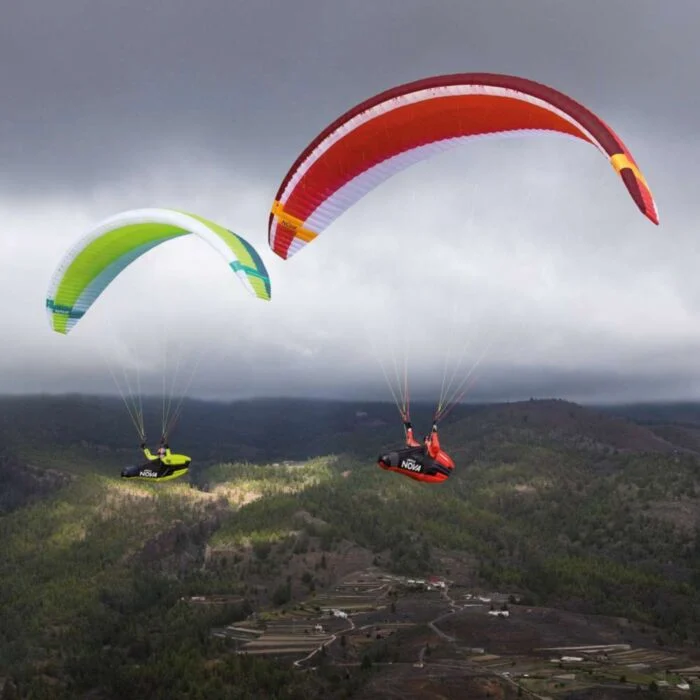
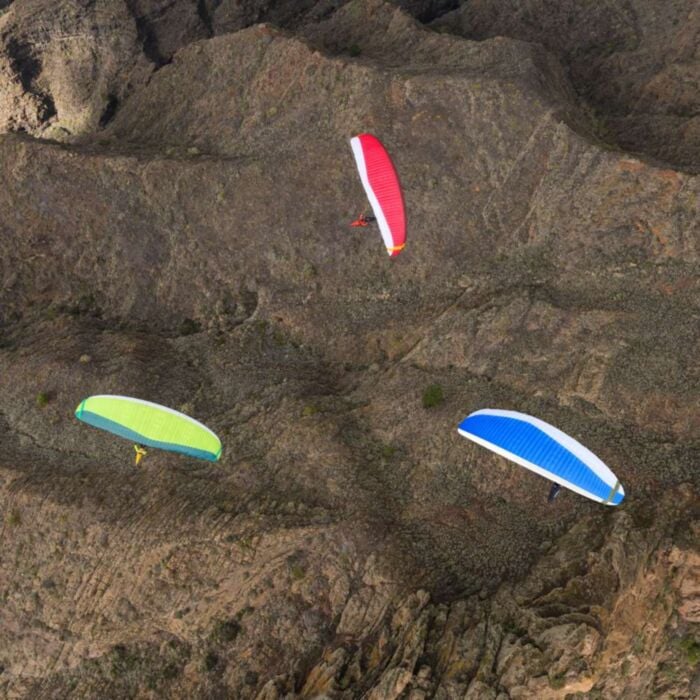
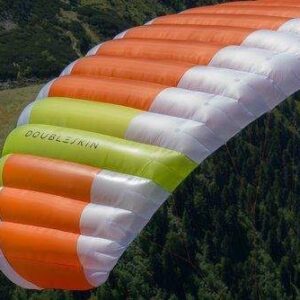

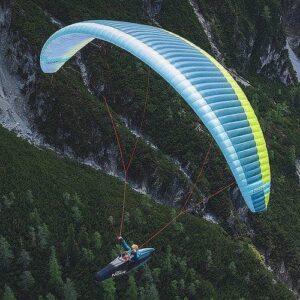

Reviews
There are no reviews yet.